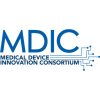Today the trend in healthcare is ‘patient-centric care model’. This is an addition to our previous five ‘P’s of modern healthcare: prevention, prediction, personalization, preemption and personal responsibility.
The rise of smartphones as a ‘Swiss knife’ of personal healthcare matches extremely well with this trend. Some years ago, every sport enthusiasts had to carry around a chest strap to measure pulse rate. Today it is about to be replaced by a smart watch – available practically from every smart phone manufacturer. The deceptively small device measures not only heartbeat, but also distance travelled, quality of sleep and multitude of other parameters. It is not only the ‘quantified-self’ movement, but also their granny that is starting to use these devices. People are interested in and willing to take responsibility.
What is an App?
History of applications developed for smartphone started with Apple iPhone 3G that was launched on 10 June 2008. At the same time, the App Store opened for developers and customers. Development has been rapid. The number of applications in the App Store exceeded 800 in one month. In the beginning of 2010 there were 140,000 apps. Now the number exceeds 1.2 million. Growth in equivalent Google Play store has been even faster.
An app has been developed specifically for a smartphone and is optimized to work taking into account smartphone features and limitations, for example screen form factor and missing physical keyboard.
In many cases, a medical device is made of intended use. Distinction between a life style device (for example a sports watch) and a medical device depends on how the manufacturer describes the device. ‘Track your pulse rate to adjust your training into an optimal level’ is completely different device from ‘monitor your pulse rate to get an early indication of heart problems’. The same distinction applies also to software. A manufacturer is not always able to take cover behind the stated intended use. As one competent authority phrased it: ‘if it talks like a medical device, walks like a medical device and looks like a medical device, it does not help that you call it a recreational device’.
There are apps used to measure heart rates and variations therein. If the supplier intends to provide interpretations and diagnosis of the results, it may not be enough to state that: ‘This application does not replace real medical devices. All measurements made with the help of this application are introductory and should not be used for a medical conclusion of any sort.’
Crossing into the realm of medical devices
A well-known example of an app classified as a medical device is uCheck from Biosense Technologies, Inc. The pack consists of test strips, approved by FDA, reference color chart and an app for iPhone. User will use the test strip with urine sample and take a photo of the strip with the reference color chart. Software will give interpretation of the test results.
Conclusion made by FDA: ‘Since your app allows a mobile phone to analyze the dipsticks, the phone and device as a whole functions as an automated strip reader.’ This means that the app is no more just for fun, but a part of a regulated medical device.
In Europe, a higher risk class medical device requires CE mark certified by a notified body, in the U.S., pre-sales approval from FDA.
Classification of an App as a medical device
Medical Device Directive 93/42/EEC gives a good definition of what is a medical device. It should be noted that stand-alone software will always be classified as an active medical device and because of that classification rules (Annex IX in MDD) of 9-12 will apply. The classification and interpretations have been further clarified by MEDDEV 2.1/6:2012 document: ‘Guidelines on the Qualification and Classification of Stand Alone software used in Healthcare within the regulatory Framework of Medical Devices’.
The document describes that standalone software can directly control an apparatus, provide immediate decision triggering, or can provide support for healthcare professionals.
However, not all stand-alone software used within healthcare can be qualified as a medical device. It is worth to note that UK’s Medicines and Healthcare products regulatory Agency (MHRA) has excellent web pages on the subject, such as: ‘Guidance on medical devices stand-alone software’. Among the advice from MHRA is, for example, that whenever the manufacturer will use words ‘amplify’, ‘analysis’, ‘interpret’, ‘alarms’, ‘calculates’, ‘controls’, ‘converts’, ‘detects’, ‘diagnose’, ‘measures’, or ‘monitors’, it raises probability that the app will be considered a medical device.
Further recommendations and guidance
Instructions on when software will be regulated as medical devices, has been slow to progress. FDA reacted first in 2011, when it published, ‘Mobile Medical Applications: Guidance for industry and Food and Drug Administration Staff’. While the document has been disclaimed as ‘Contains nonbinding Recommendations,’ wise developers will take notice.
In short, the guidance states that apps to be regulated are those that meet the definition of a medical device: 1. Accessories to a regulated device and 2. Those that transform a mobile device into a medical device.
In the development of medical device software, a key standard is IEC 62304 medical device software: software lifecycle processes. It provides requirements for the development and maintenance of medical software. Practical guidance on how to apply the standard, especially for the European market, can be found in the FAQ section related to the implementation of EN 62304:2006 with respect to MDD 93/42/ EEC.
For more information, visit http://www.sgs.com/en/Life-Sciences/ Medical-Devices.aspx.





